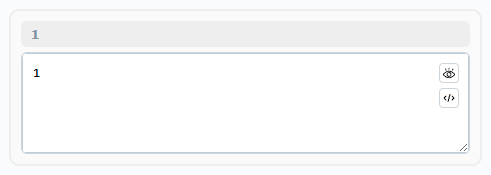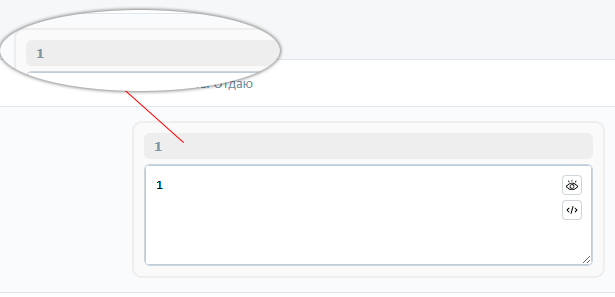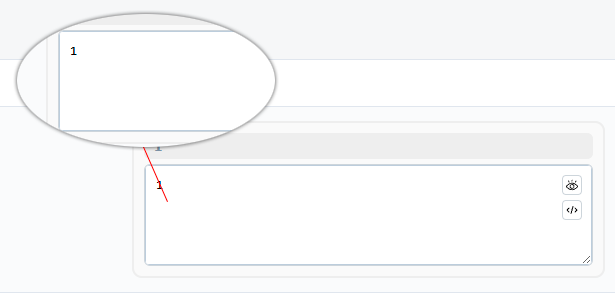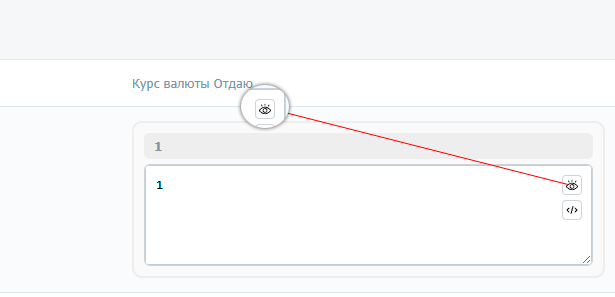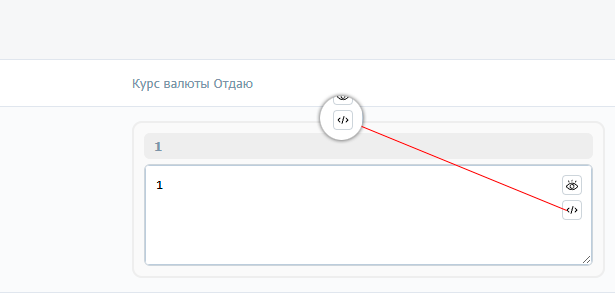In many places in the RichExchanger exchange sсript, especially in areas like the rate or reserve fields, you can find the following field:
This is a calculator field with shortcodes.
The top, informational section displays the final result of the entered formula. But only when the page is refreshed.
The main section is a text area for entering the formula itself.
Normal text input
The calculator works like a regular text field. If you enter a numeric value, the result will be the same numeric value:
If you enter the formula value:
1
the result will be:
1
It's simple and easy.
If you enter:
100
the result will be:
100
Math Operations
This form works like a regular, simple calculator. There's nothing complicated about it.
And it supports standard mathematical operations:
+ plus;
- minus;
* multiply;
/ divide.
If you enter the formula:
2 + 2 * 2
the result will be:
6
According to the rules of mathematics, everything is as it should be.
Therefore, you can safely play around with any numbers. For example, the result of the following value:
100 + 20 / 10
will be:
102
Nothing new or unusual.
And the result of the following value:
230 + 1
will be:
231
Easy, right?
Parentheses
According to the rules of mathematics, everything in parentheses is executed first.
If in the example:
2 + 2 * 2
the result will be:
6
because multiplication occurs first, then addition, but with parentheses, things are different.
So in the example:
(2 + 2) * 2
the result will be:
8
because the parentheses are applied first.
Percentage
Sometimes, even very often, we need to add a percentage to something.
For example, we have 100 and need to add 1%.
In a calculator, it would look like this:
100 * 1.01
This works, but it's a bit complicated.
In our calculator, you can enter a value directly as a percentage.
Value:
100 + 1%
We get the result:
101
Easy and simple.
Shortcodes
A shortcode in the calculator works simply as an auto-rеplace.
For example, our shortcode looks like this: [inx_1234], and its value is "1234".
When we enter into the formula:
1 + [inx_1234]
this is interpreted as:
1 + "1234"
and the result is:
1235
A shortcode can have a complex value, for example: [inx_1234], and its value is "+ 1234".
Thus, the formula:
1 + [inx_1234]
is interpreted as:
1 + "+ 1234"
and the result is:
1235
And here's a shortcode: [inx_1234], and its value is "- 1234".
Thus, the formula:
1 + [inx_1234]
is interpreted as:
1 + "- 1234"
and the result is:
-1233
You can also use brackets and other shortcodes in shortcodes.
"Or" sign
The field result must always be a numeric value. Therefore, if the shortcode fails or doesn't exist, 0 will be returned.
For example, the shortcode [indx_1222] doesn't exist.
Then a formula like this:
1 + [indx_1222]
will yield the result:
0
To avoid such situations, there is an "or" operator, entered in the field as two vertical lines.
The formula looks like this:
1 + [indx_1222] || 1 + [indx_1223] || 85
will first look for the first option:
1 + [indx_1222]
If there is no shortcode, it will look for the second option:
1 + [indx_1223]
If there is no such shortcode, it will display the third option:
85
Visual representation
You enter any formula in the text field and can always check the result without saving.
To do this, click the "visual" icon:
All shortcodes
Remembering all the shortcodes is difficult, so there's a shortcode icon:
Clicking it opens a shortcode menu:
Clicking on the name opens the menu, and you'll see the available shortcodes and a search form for that section:
Clicking on the shortcode name or value will transfer the shortcode to the form from which the menu was called.
